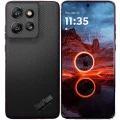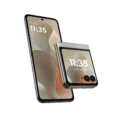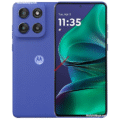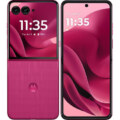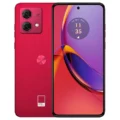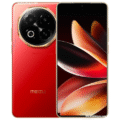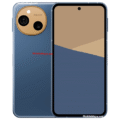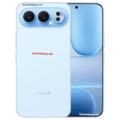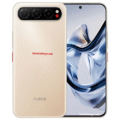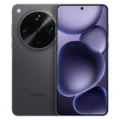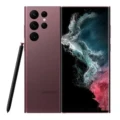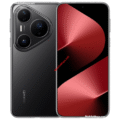Price List: Under Tk.5,000 | Tk.5001-10000 | Tk.10001-15000 | Tk.15001-20000 | Tk.20001-30000 | Tk.30001-40000 | More Mobiles
- Home
- All Mobile
- Motorola
- Motorola Moto G (2026)
Motorola Moto G (2026)
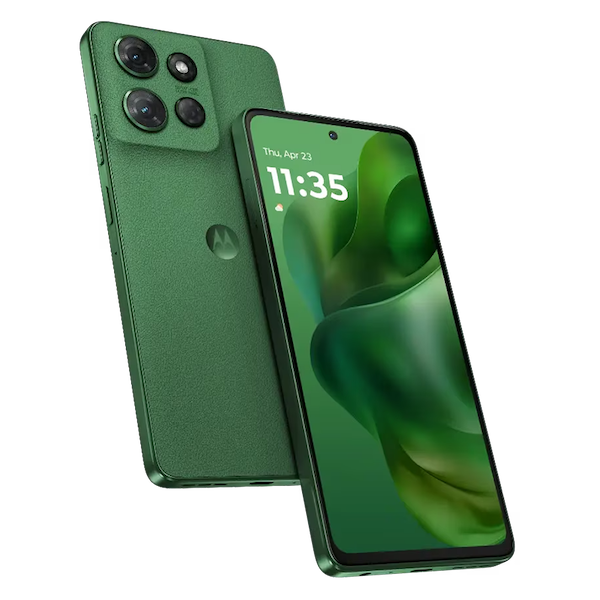


Specifications
Price in Bangladesh
| Expected Price | Coming soon |
General
| Device Type | Smartphone |
| Released | November, 2025 |
| Status | Available |
Hardware & Software
| Operating System OS => Every computer system run on a base software called Operating System (OS). Operating System controls all basic operations of the computer (such as smartphone, PDAs, tablet computers and other handheld devices). The Operating System allows the user to install and run third party applications (apps), apps are used to add new functionality to the device. | Android |
| OS Version | v15 |
| Chipset Chipset is a group of integrated circuits designed to perform one or a more dedicated functions, often with real time computing constraints, Popular smartphones are equipped with more advanced embedded chipsets that can do many different tasks depending on their programming. | Mediatek Dimensity 6300 (6 nm) |
| CPU CPU (Central Processing Unit) mostly known as processors, CPU processes instructions in order to carry out certain functions that make your device operate properly. Processors are often described as the brain of computers, smartphones and tablets, Smartphones and tablets rely on processors to carry out their every task, Processors are an incredibly important factor in selecting any type of computing device, including your smartphone. | - |
| GPU GPU (Graphics Processing Unit) is a single-chip processor designed to rapidly manipulate and alter memory to accelerate the creation of images in a frame buffer intended for output to a display, This includes things such as lighting effects, object transformations, and 3D motion. | - |
| RAM (Memory) RAM (Random Access Memory) is a type of computer memory that can be accessed randomly, any byte of memory can be accessed without touching the preceding bytes that allows information to be stored and accessed quickly from random locations. RAM is the most common type of memory found in computer systems, smartphones, tablets and other electronic devices. | 4 GB |
Design
| Dimensions | - |
| Weight | - |
| Colors |
Forest Gray, Sapphire Blue |
| Build Material | Glass front (Gorilla Glass 3), silicone polymer (eco leather) back, plastic frame |
Display
| Display Type Display Technology => A number of display technologies and types used in mobile phones => TFT (Thin Film Transistor), IPS (In-Place Switching), OLED (Organic Light Emitting Diode), AMOLED (Active-Matrix Organic Light-Emitting Diode), Super AMOLED (an even advanced version of AMOLED), Resistive Touchscreen (Resistive touchscreens contain two layer of conductive material with a very small gap between them which acts as a resistance), Capacitive Touchsceen (Capacitive touchscreen technology consists of a layer of glass coated with a transparent conductor) | IPS LCD |
| Size | 6.7 inches |
| Resolution | 720 x 1604 pixels |
| Refresh Rate | 120Hz |
| HDR 10 / HDR+ support |
Rear Camera
| Camera Setup | Dual |
| Main Camera | 50 MP |
| Second Camera | 2 MP |
| OIS | |
| Video | 1080p@30fps |
Front Camera
| Camera Setup | Single |
| Secondary |
16 MP |
| Video | 1080p@30fps |
Battery
| Battery Type Battery Type => Cell phones run on various kinds of batteries depending on the manufacturer, phone size or shape and features. There are basically four types of cell phone batteries => Lithium Polymer, Lithium Ion, Nickel Metal Hydride and Nickel Cadmium. | Li-Ion (Lithium Ion) |
| Placement | Non-removable |
| Capacity Battery Capacity is a measure (typically in Amp-hr) of the charge stored by the battery, and is determined by the mass of active material contained in the battery. The battery capacity represents the maximum amount of energy that can be extracted from the battery under certain conditions. | 5000 mAh |
Storage
| Storage Capacity | 64 GB, 128 GB |
| USB OTG |
Network
| 2G Network |
GSM 850 / 900 / 1800 / 1900 |
| 3G Network |
HSDPA 850 / 900 / 1700(AWS) / 1900 / 2100 |
| 4G Network |
1, 2, 3, 4, 5, 7, 8, 12, 13, 14, 17, 18, 20, 25, 26, 28, 29, 30, 38, 39, 40, 41, 48, 66, 71 |
| 5G Network |
2, 5, 7, 12, 14, 25, 26, 29, 30, 41, 48, 66, 70, 71, 77, 78 SA/NSA/Sub6 |
| SIM SIM (Subscriber Identity Module) is a small card that contains mobile network subscriber's account information. This allows the phone using the card to attach to a mobile network. The SIM card is most commonly associated with GSM and UMTS mobile networks. Moving a SIM card from one phone to another allows a subscriber to switch mobile phones without having to contact their mobile network carrier. SIM cards can also be used by a phone to store limited amounts of data, such as phone numbers and text messages. | Standard SIM |
Data
| GPRS GPRS (General Packet Radio Service) is a packet oriented mobile data service on the 2G and 3G cellular communication system's global system for mobile communications (GSM), Generally, GPRS is used for the purpose of wireless data transfer, such as sharing pictures and videos or browsing the Internet via a mobile phone connection. | |
| EDGE EDGE (Enhanced Data GSM Environment) is a wireless network technology generally considered the next step in the 2G network offers data transfer rates up to four times faster than ordinary GSM networks, Generally, EDGE is used for the purpose of wireless data transfer, such as sharing pictures and videos or browsing the Internet via a mobile phone connection. | |
| Speed | HSPA, LTE, 5G |
| Web Browser Web Browser => a web browser is a software application used to locate, retrieve and display content on the World Wide Web, including Web pages, images, video and other files, The primary function of a web browser is to render HTML, the code used to design or markup webpages. | HTML5 |
Messaging
| SMS SMS (Short Messaging Service) is a text messaging service component of phone, Web, or mobile communication systems. It uses standardized communications protocols to allow mobile phone devices to exchange short text messages over the networks. | Yes |
| MMS MMS (Multimedia Messaging Service) is a standard way to send messages that include multimedia content (audio clips, video clips and images) to and from mobile phones over wireless networks using the WAP protocol. | |
| Email Email (Electronic Mail) is a system for receiving, sending, and storing electronic messages, Similar to a letter, email is text messages that may contain files, images, or other attachments sent via the internet to a recipient by using applications and software prograps. An email address is required to receive email, and that address is unique to the user. | Yes |
| IM IM (Instant Messaging) is an exchange of text messages through a software application, it enable you to create a kind of private chat room with another individual in order to communicate in real time over the Internet. | Yes |
Connectivity
| Bluetooth Bluetooth is a wireless communications technology for exchanging data between mobile phones, headsets, computers and other network devices over short distances without wires, Bluetooth technology was primarily designed to support simple wireless networking of personal consumer devices. | Yes |
| Wi-fi Hotspot | |
| Infrared Infrared connectivity is an old wireless technology used to connect two electronic devices. It uses a beam of infrared light to transmit information and so requires direct line of sight and operates only at close range. | |
| USB | USB Type-C 2.0 |
| GPS GPS The Global Positioning System is a satellite-based radio navigation system, GPS permits users to determine their position, velocity and the time 24 hours a day, in all weather, anywhere in the world, In order to locate your position, your device or GPS receiver must have a clear view of the sky. | GPS, GALILEO, GLONASS |
| NFC NFC (Near field communication) is a set of standards for smartphones and similar devices to establish peer-to-peer radio communications with each other by touching them together or bringing them into proximity, usually no more than a few inches. |
Media
| FM Radio | Unspecified |
| Loudspeaker | Yes, with stereo speakers |
| 3.5mm Jack | Yes |
Sensors & Security
| Fingerprint Sensor |
More
| Made By | US |
Performance Tests
Motorola Moto G (2026) Price in Bangladesh
The Motorola Moto G (2026) is expected to arrive in Bangladesh with a starting price yet to be officially confirmed. However, it is likely to fall within the budget to lower mid-range category, offering 64GB or 128GB of internal storage alongside 4GB of RAM.
This upcoming smartphone is designed to deliver great value for money, balancing a large 6.7-inch display, dual rear cameras, and long-lasting 5000mAh battery. Powered by Android 15 and the efficient MediaTek Dimensity 6300 chipset, it’s aimed at everyday users seeking solid performance, 5G connectivity, and an eco-conscious design without breaking the bank. With stylish aesthetics and reliable hardware, the Moto G (2026) stands out in the budget segment for 2025.
Motorola Moto G (2026) Specifications
Display and Design
The Motorola Moto G (2026) features a 6.7-inch IPS LCD display with a resolution of 720 x 1604 pixels. The panel supports a 120Hz refresh rate, ensuring smoother scrolling and more responsive touch experiences—ideal for casual gaming and multimedia usage.
In terms of design, the phone impresses with its eco-leather silicone polymer back, Gorilla Glass 3 front for added durability, and a plastic frame for lightweight handling. It comes in Forest Gray and Sapphire Blue, giving users two elegant choices. Though the exact dimensions and weight haven’t been disclosed yet, Motorola is known for ergonomic builds, so users can expect a comfortable in-hand feel.
Performance and Processor
Under the hood, the Moto G (2026) is powered by the MediaTek Dimensity 6300 (6nm) chipset, a power-efficient processor that supports 5G connectivity and handles multitasking with ease. Though the exact CPU and GPU configurations are unspecified, the Dimensity 6300 series generally offers balanced performance for daily tasks, video streaming, and light to moderate gaming.
The phone comes with 4GB of RAM and two internal storage options—64GB and 128GB. There’s also USB OTG support, allowing users to expand storage or connect external devices. Whether you’re juggling apps or browsing the web, this device promises a smooth experience for budget-conscious buyers.
Camera and Video
The Moto G (2026) sports a dual rear camera setup comprising a 50MP main sensor and a 2MP secondary camera (likely for depth or macro shots). The primary camera is expected to capture detailed images in daylight, with software features like AI scene detection, HDR, and portrait mode enhancing photography.
On the front, the phone has a 16MP selfie camera, ideal for video calls and social media content. Both the front and rear cameras support 1080p video recording at 30fps, offering decent quality for casual videography.
Battery and Charging
Motorola equips this phone with a large 5000mAh non-removable Li-Ion battery, ensuring all-day performance on a single charge. While the exact charging speed hasn’t been disclosed, Motorola typically includes fast charging support in its Moto G lineup, so users can expect decent charging times.
Combined with Android 15’s improved power efficiency and the 6nm chipset, users should enjoy excellent battery life, even with regular video streaming, web browsing, or light gaming.
Connectivity and 5G Support
The Moto G (2026) offers extensive network support, including 2G, 3G, 4G LTE, and 5G (SA/NSA/Sub-6), ensuring seamless connectivity across all major carriers in Bangladesh and beyond.
It also supports:
- Dual SIM capability
- Bluetooth
- Wi-Fi hotspot
- USB Type-C 2.0
- GPS with GALILEO and GLONASS
- 3.5mm headphone jack
While FM Radio is unspecified, the phone includes stereo speakers, enhancing the media experience.
Additional Features
For security, the Moto G (2026) is equipped with a fingerprint sensor, most likely side- or rear-mounted. It runs on Android 15, offering the latest features, enhanced privacy controls, and improved system optimization.
Other notable features include:
- Stereo speakers for immersive sound
- Eco-friendly design with a sustainable silicone polymer back
- Expandable storage via USB OTG
These extras add value to what’s already a compelling budget smartphone.
Reason to Buy
Here are some of the best reasons to consider the Motorola Moto G (2026):
- Affordable 5G smartphone with reliable connectivity
- Large 6.7-inch 120Hz display for smooth visuals
- 5000mAh battery for extended usage
- Android 15 OS for the latest features and optimizations
- Eco-leather back design that looks premium and feels good
- Good 50MP main camera for everyday photography
- Expandable storage and USB Type-C connectivity
Verdict
The Motorola Moto G (2026) is an excellent choice for users looking for a budget-friendly 5G smartphone without compromising on core features. Its combination of large high-refresh-rate display, durable design, reliable battery, and clean Android experience makes it ideal for students, casual users, and anyone needing a dependable daily driver.
While it may not compete with flagships in raw power or camera versatility, it offers tremendous value for the price—especially for those prioritizing connectivity, software experience, and battery life.
FAQ
Q: What is the expected price of Motorola Moto G (2026) in Bangladesh?
A: The price has not been officially confirmed yet, but it’s expected to be in the budget to lower mid-range segment.
Q: Does the Moto G (2026) support 5G?
A: Yes, it supports 5G SA/NSA/Sub-6 bands, ensuring fast network speeds.
Q: What is the battery capacity?
A: It has a 5000mAh battery, suitable for a full day of usage.
Q: What version of Android does it run?
A: The phone runs on Android 15 out of the box.
Q: Is there a fingerprint sensor?
A: Yes, it comes with a fingerprint sensor for added security.
Q: Can I expand storage on this device?
A: While there’s no microSD slot mentioned, it does support USB OTG, which allows for external storage access.
Q: Does it have stereo speakers?
A: Yes, the Moto G (2026) features stereo speakers for enhanced sound quality.
User Reviews
Disclaimer Note
We do not guarantee that the information of this page is 100% accurate and up to date.


